Hannah Streefkerk’s artworks are nature-oriented, inspired by natural elements such as water and land formations, trees, flowers and rocky landscapes. With a certain sensibility towards rhythms, structures and patterns, she extracts the essences of various forms in nature and translates them into site-specific works of art.
In 2014 Hannah won the Art gallery society of NSW prize for her installation ‘To take care of’ in the exhibition Sculpture by the sea, Bondi, Sydney, Australia and in the same year the first prize for her installation ‘To remember’ at Bewegter wind in Kassel, Germany. She has exhibited both nationally and internationally, inside as well as out, with art in nature, installations and embroideries. She has most recently become a member of the renowned 62 group of textile artists.
In this interview, Hannah discusses her first steps to becoming an artist. She explains why mending the environment is a recurring theme and what motivates her to create on the big scale.
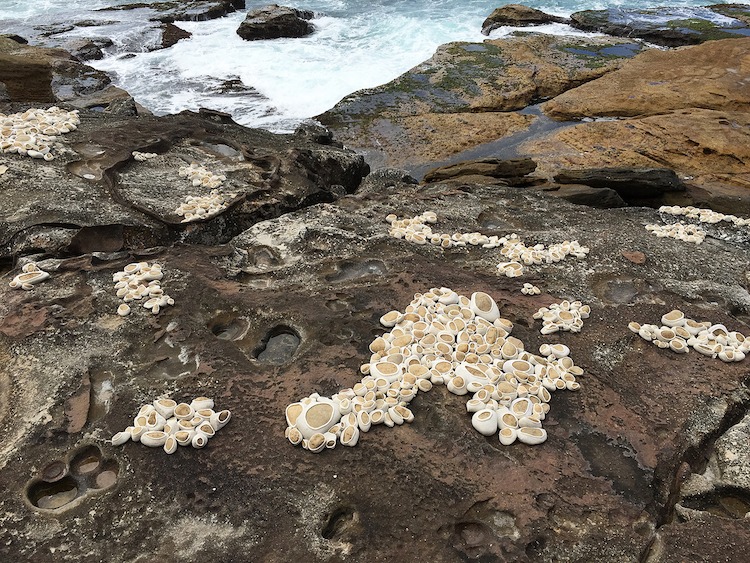
The learning hour
TextileArtist.org: What initially attracted you to textiles as a medium?
Hannah Streefkerk: I grew up in a big, very religious family with six sisters and one brother. My mother worked part time as a textile craft teacher in a primary school. Every evening she taught me and my sisters some textile techniques for an hour.
I grew up without a tv and during this hour every evening, I wondered if this was my mother’s way of preparing me for adult life. I know that I was mixed in my feelings about this hour. Sitting around the big table with all my sisters, but working with my hands was ok for me. That I had to, I did not always appreciate, because sometimes I was just not in the mood, or the technique we worked in I did not like, knitting for example.
I really liked working with textiles and I remember my first cross stitch work. I loved it! I also remember a bag which I made in smocking technique, a kind of magic technique! The meditative character of many textile techniques is what attracts me the most, and the fact that you hardly need big tools, a needle and you can create!
What was your route to becoming an artist?
Already as a child, I loved working with my hands and I think I always knew that I wanted to become an artist. In high school when I decided what I wanted to study the next stage was to find an art academy.
My parents were less happy with my choice and we made a kind of deal that I also will study to be an art teacher as it was possible to do both at the art academy, I could at least earn some money my parents thought.
At the Art Academy of Maastricht, I studied both to be an art teacher and sculpture. In the first year there I discovered sculpture and really liked that. After two years in Maastricht, I decided to move to the north of The Netherlands and continued my studies at the Art Academy of Groningen.
In 1997 I took my master in interdisciplinary arts. During my complete studies, I never used textiles or textile techniques. In some way they were connected to my family and the island where I grow up. Until 2006 my work existed of computer installations and conceptual work.
In 2006 I had an exhibition at an art gallery in Groningen and I built an interactive computer installation. When designing this installation I was thinking that it worked but it seemed so cold and hard. It needed something cosy. The installation was about communication between lovers, and I decided to embroider some pillows with kissing couples on it.
At that moment I wanted to make something kitschy and embroidery fitted for me in that. During the many hours embroidering these pillows, I felt in my body and brain that I missed this kind of working with my hands. After that, I completely changed my kind of work and installations. From that moment on I discovered the textile expressions and techniques I liked.
I never see myself as a textile artist, I see myself as an artist working a lot with textiles and textile techniques when the concept needs it. I work a lot with the idea that I want to mend nature to make us aware of environmental issues. Yarn and stitches are for me perfectly connected to mending.
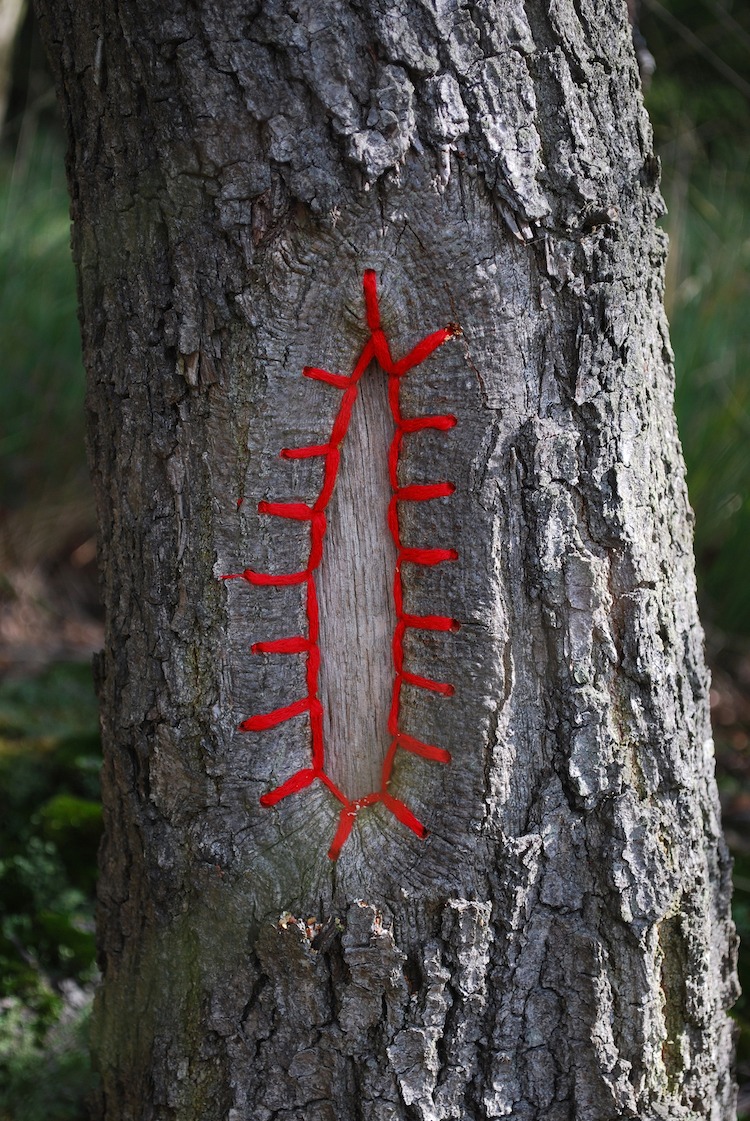
The nature of time
Tell us a bit about your chosen techniques.
I most like embroidery or better expressed, I like a stitch. One stitch can express so much. I mostly like to use stitches in situations where you hardly expect them, like for example to mend a tree. This small stitch which we normally take for granted and hardly notice becomes something strong and meaningful when it is used in another context.
Besides a single stitch, I like the meditative character of embroidery and that it is a very time-consuming technique. Somehow my work is about the nature of time, and investing a lot of time in a work, emphasises the concept. Why invest a lot of time in something when it is not worth it.
Besides embroidery, I like crocheting, mainly because it gives me the option to sculpt with it. With one single tool, I can create whatever I want. I am not really a 2d artist in the sense that I never draw or paint, I like the 3d world and crocheting fits for me.
How would you describe your work and where do you think it fits within the sphere of contemporary art?
In one sentence you could say that my work is about mending and the nature of time. I want to create awareness for environmental problems with my work and I want people to notice again. We live in a very hectic world, everything seems to circle around money and business. Stress is a new disease and we seem to forget our relation to nature.
I am aware of the fact that these are big words, but I really feel concerned about our world. For me, it is very important in art, that there is something more in the work than just a nice look. The work should give more, a kind of statement or message. Works which are only made to be beautiful hardly interest me. I want to feel the artist in a work, the story behind it. I see myself absolutely as a contemporary artist, I am a product of my time.
I am concerned about the environment but at the same time, I use plastics etc. I am not better than anybody else. I think these mixed feeling are very modern. We know that it would be better to change things, but the pressure in daily life is too much.
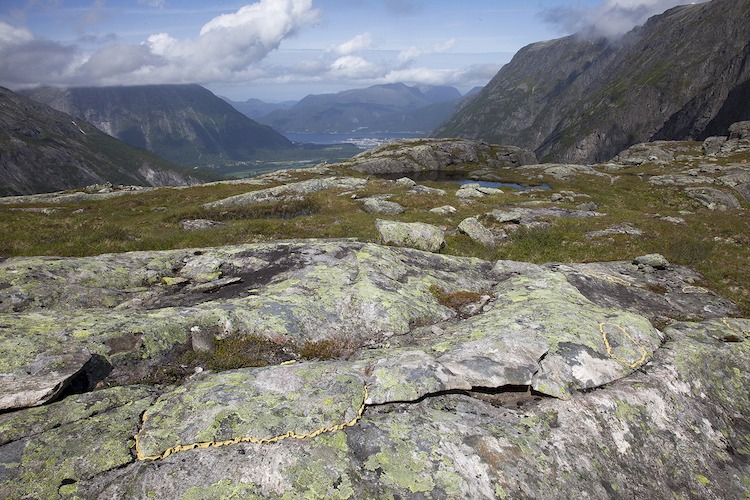
Do you use a sketchbook? If not, what preparatory work do you do?
This question makes me smile a bit because it seems always so important to use sketchbooks. I always have sketchbooks because I really love beautiful empty books, but in some way, I prefer to keep them empty. I never sketch and draw. When I am working on new work the first stage happens in my head or in my hands.
When I am working on new work the first stage happens in my head or in my hands. I can play with some yarn or something I found, then things grow in my head. I always carry a sketchbook with me, but it’s filled with leaves which I found on the street or with to do lists.
Sometimes you can see this beautiful artist’s sketchbooks, with a lot of nice drawings or samples. I can be jealous of that, but there’s absolutely nothing I can do. I am a terrible drawer. I think I am more of the 3d sketcher like I said, I prefer to play with things I found and have.
Also having walks in the forest is a kind of sketching for me, or talking to people, walking in cities, going to second-hand shops. I can get ideas while sitting in the train or waiting at the station.
You can have these small moments that you are completely in your own world, that are the moments that idea develop and grow. Also, a good moment in time is just before you fall asleep.
Learning to trust
What environment do you like to work in?
I mostly like to work outside, preferably in places with stunning nature. In these kinds of places I always feel that whatever I will do, it will be too much, because nature will win anyway. I like this fight in my head, or better said, I like this fight when I am ready.
The moment that I’m in this thinking process of what to do in that location, it feels hard and incredibly difficult. I can question myself and what I am doing there completely. But I learned also that I can trust myself.
When I’m long enough in that place something will show up in my head, and that feeling is fantastic. But to really create site-specific work is the best and hardest work I know.
In 2011 I participated in Norway at a site-specific exhibition on top of a mountain. Since 2011 I participated several times because I am not ready with this place. When you come on top of the mountain the view is incredible and the mountain itself also. You only see stones, small plants, snow and water pools. Everything you want to use as material, you have to carry in a backpack up, or you have to use what you find on the location. It makes it very difficult.
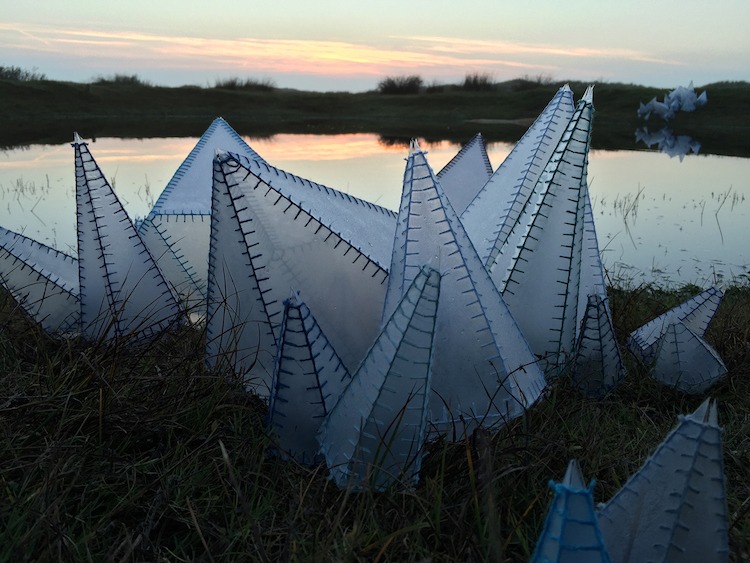
What currently inspires you?
At the moment I am working on a work which I call ‘Cabinet of Natural Memories’. I always collected natural items from everywhere I go and at the moment I am using all these items.
With yarn and techniques like embroidery and crocheting, I am giving reactions on these objects. All the objects together will be presented like a cabinet des curiosités.
Since I started with this work I feel that I look even more around than normal. It is fun to realise that when I thought I always looked carefully around me, I see all the time new things and can be amazed by simple natural things, so maybe I did not look so well before.
Tell us about a piece of your work that holds particularly fond memories and why?
In 2009 I sent a proposal to the environmental art biennale of I-park in Connecticut, USA. I-park is a place where they offer artist in residence and they organise this biennale.
At that time I was not so experienced at all with working site specific. My proposal was selected and I went to I-park. In my proposal, I wrote that I would like to mend nature, but I did not really know how. In I park I found a big tree which was fallen over a road. It was a huge tree. I worked for 2 weeks to repair this tree.
The first days I mainly spent on thinking to find a solution on how to mend the tree. To focus this long time on one project in an environment which I did not know was a fantastic experience. Besides that, there were other artists living there and the social contacts, the place and the work made this experience to one of the best in my life. Beside my work as an artist, I always have worked as a teacher to earn some basic money. To work focused on my artwork without working at the school is a luxury.
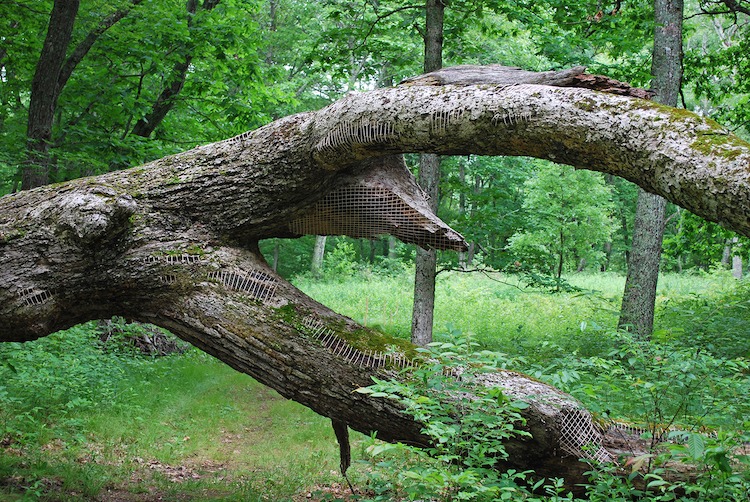
How has your work developed?
In the beginning, I mostly embroidered and did not so many site-specific works. More and more my work has developed to the site-specific and I feel now as an experienced site-specific artist.
The last years, since living in Sweden, nature is more close to me, I live in the forest, then when I lived in The Netherlands. I discovered here new materials, like birch bark. In Sweden, there are a lot of craft traditions and I can feel them inspiring me. I don’t know where it will end but for a person who loves nature I can see I am living in the perfect place.
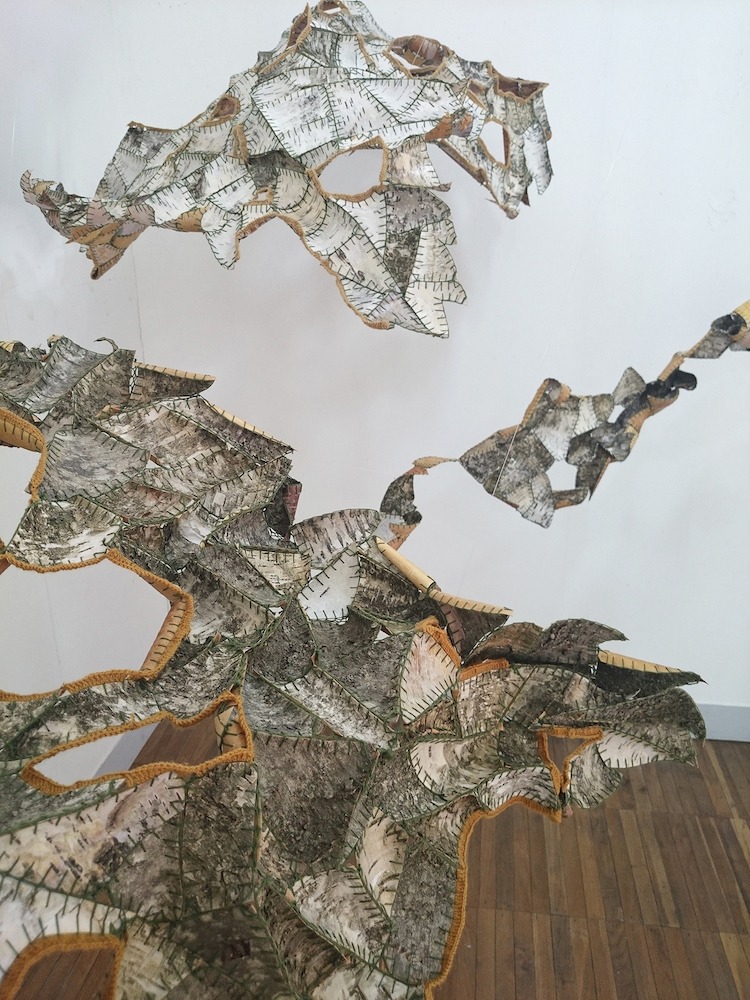
Treasured moments
What advice would you give to an aspiring textile artist?
Don’t limit yourself
What piece of equipment or tool could you not live without?
A needle, I have them in all kinds and for me, it is absolutely the best tool there is.
How do you go about choosing where to show your work?
A lot of site-specific projects I get by sending in applications and then I hope to be one of the selected artists. I don’t send proposals to everything because this takes also too much time. I prefer to select a few which I really would like.
I am also limited in taking free from my school job, so I can’t say yes to everything. I like projects which are paid well so I don’t have costs and I can afford to take free from my teaching job. I also prefer projects on locations I have never been before or that I have the feeling that I am not ready with a place.
Besides applications to outside projects, I can send information material to art galleries which I think are interesting and apply for exhibitions at their gallery. I prefer galleries which are run by artist or cities which have a not commercial style. I don’t want to exhibit in a gallery where their main focus point is selling. For me, my work is not fitting there.
I sometimes apply for textile group exhibitions but it is never my main focus. I think it can be difficult in this kind of exhibitions to really show an installation in the way I want and most of these exhibitions cost me.
In Sweden, there is this rule that when you exhibit somewhere, except for the commercial galleries, you get paid an amount, and most times the gallery pays the costs for transport and logistics. This is a very good system, and they see art as a profession.
This system needs to be improved also because most artists can still not live from their works. But for many international exhibitions, I have the feeling that I have to be rich to be able to participate, and I really don’t like that, so that is why I hardly exhibit in this kind of exhibitions. Sometimes I do it because I see it as an option to create some knowledge about my work.
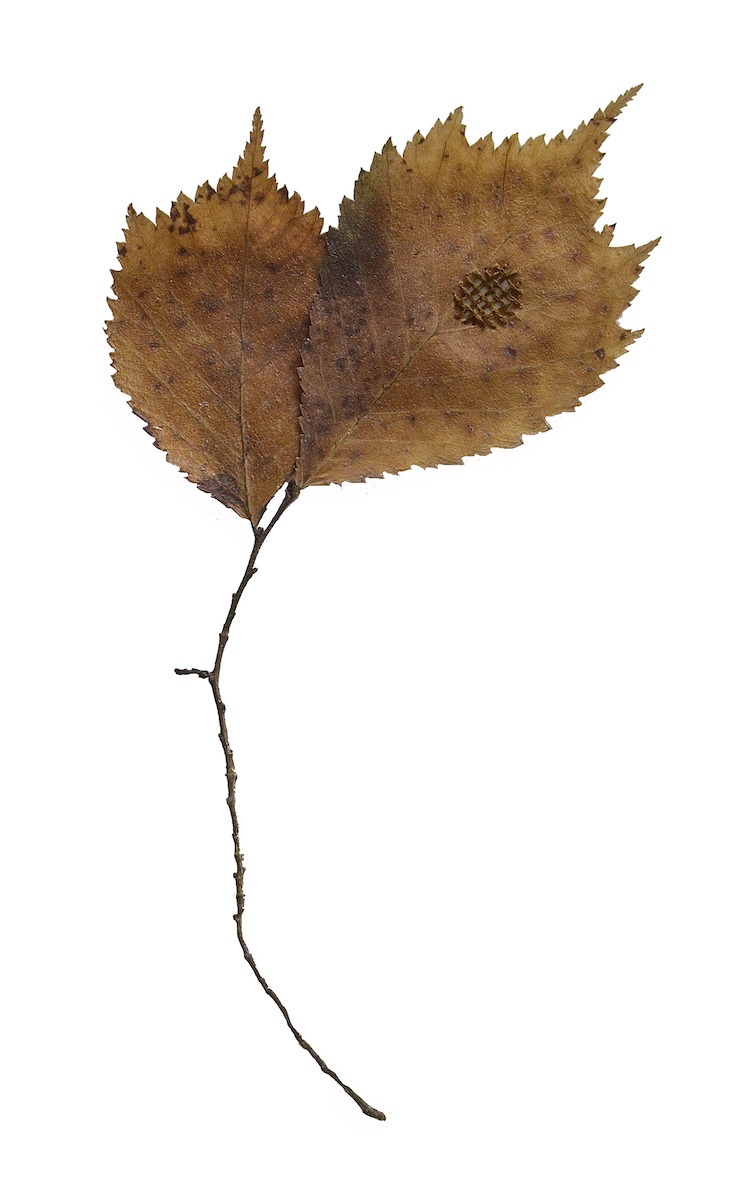
Artist Biography
Hannah Streefkerk, from the Netherlands, was based near Gothenburg in Sweden until her tragic and untimely death in 2022. She was awarded a master’s degree in visual art from the art academies of Groningen and Maastricht and was a member of the 62 Group. Hannah used embroidery and crocheting to creating site-specific works, installations and two-dimensional works, inspired by her deep passion for nature.
Let us know what your favourite aspect of the artist’s work is by leaving a comment below.
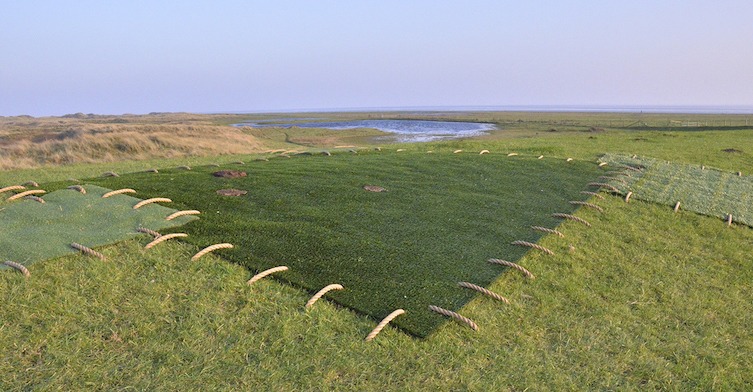

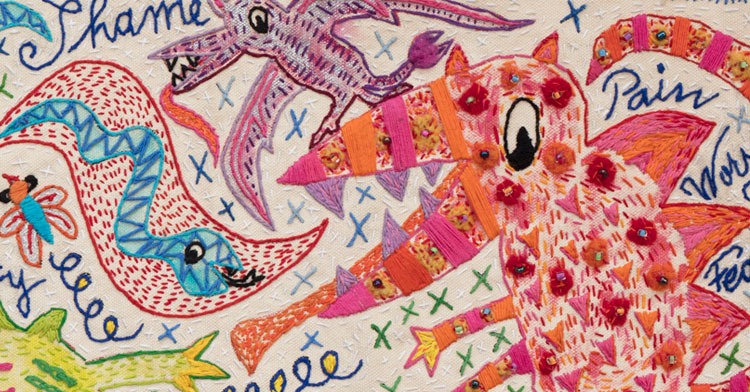
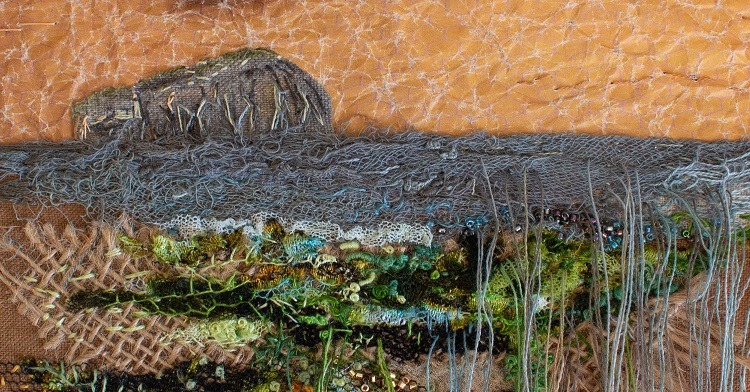
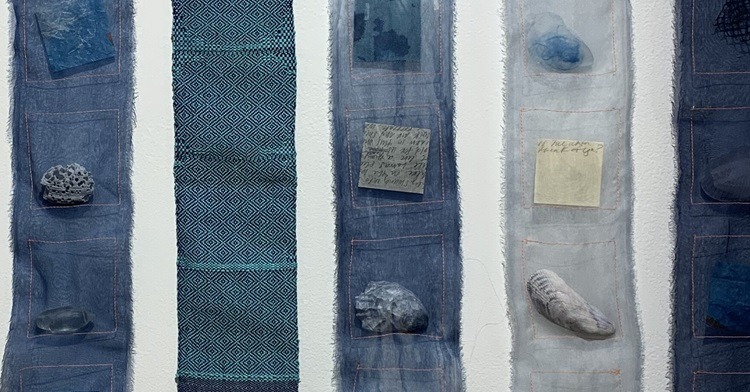
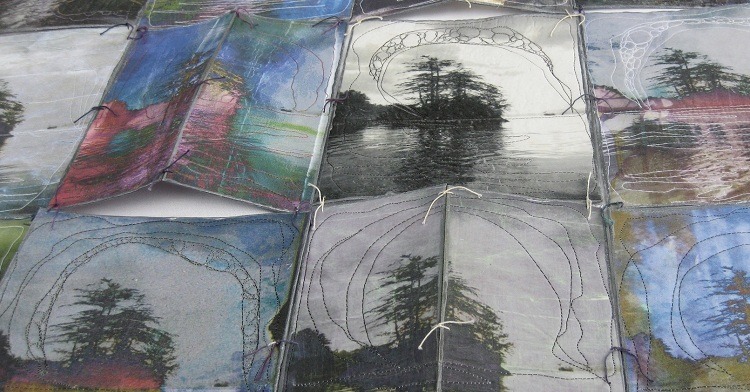
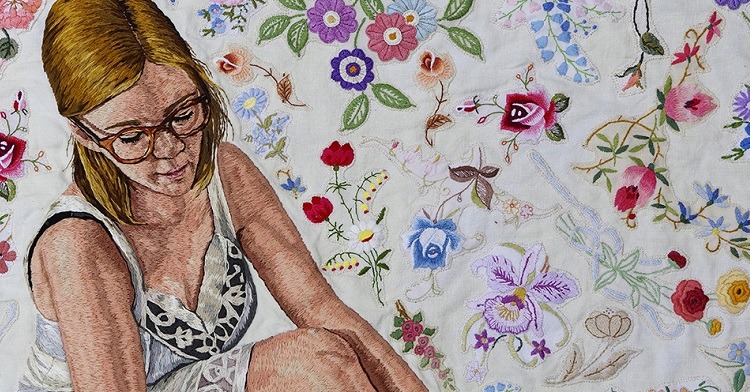
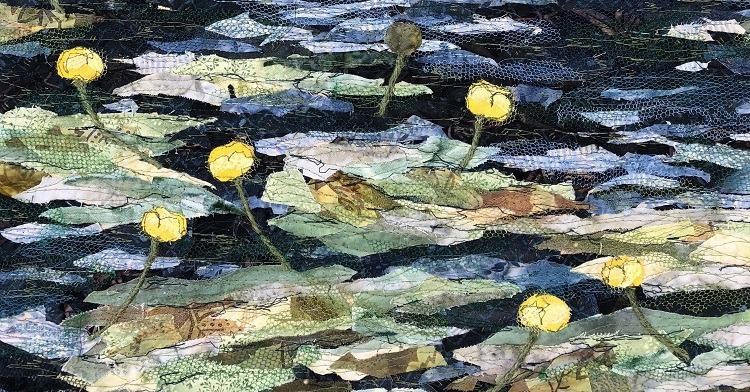
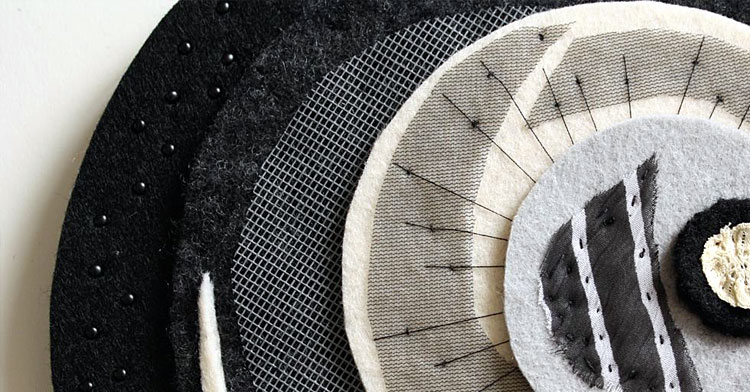
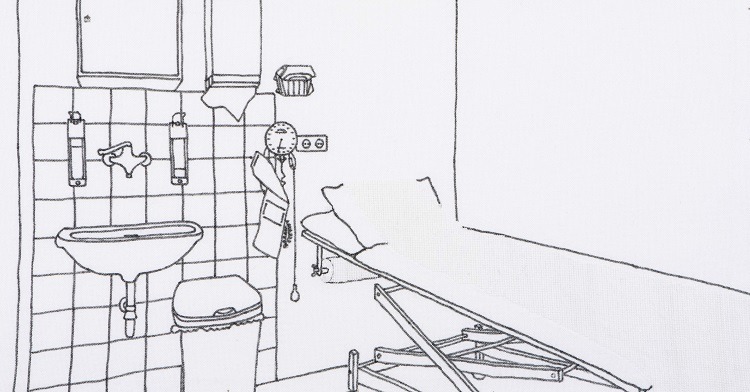
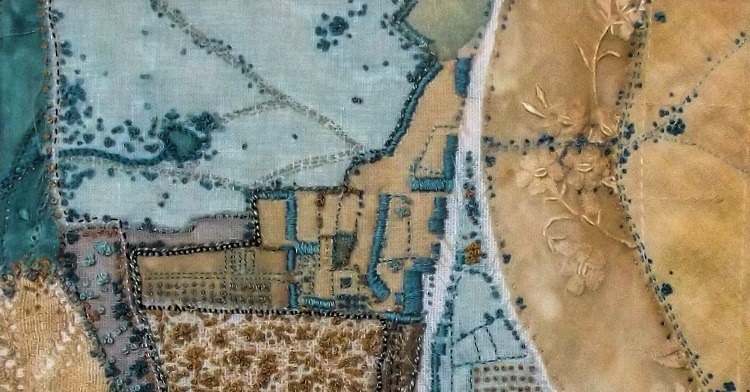
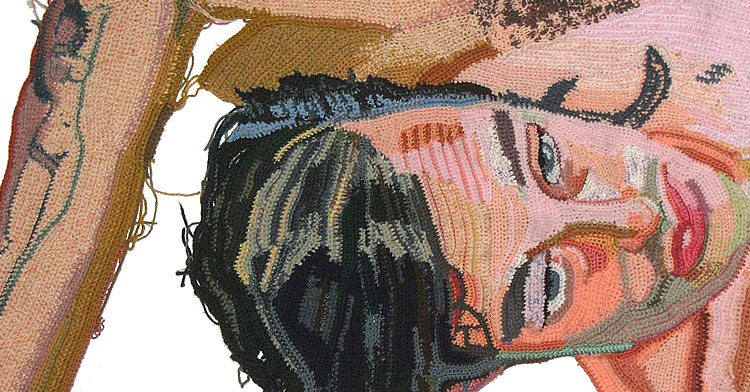
6 comments
iolanda di giambattista
originale, geniale idea di…produrre arte “collaborando” con la natura…non più per “copiarla” imitarla, ma: “ripararla”
Sonja Hillen
This article is very inspiring and recognizable for me in many different ways: the sketchbooks, the working process, the lack of time because of the side-job and on the other hand the time-consuming way of making art, the way Hannah writes about getting into an exhibition. I have to admit I am a bit jealous of all the places she is going to.. So the advice of “don’t limit yourself” is a very good one.
Most of all: I love the work!
Di Hayes
Thank goodness; an artist who admits they aren’t good at drawing. I’m terrible, too and thought at one time this meant that I wasn’t creative. Now I realise that there are different ways of translating ideas and not being able to draw challenged me to look for other ways to express and form ideas. Thank you, Hannah.
Mary Dunbar
The response to the question about sketchbooks made me smile and gave a shock of recognition of a kindred spirit– I thought I was the only one who loved empty books, and also tended to put leaves and to do lists in them. And the theme of mending things in nature is so profound. Thank you for the reminder of what we can and should do for our mother.
Kirsty Hall
Wow, I love these. So many correspondences and connections with my own work although my impulse to wrap, stitch and mend comes from a slightly different impulse.
Miriam
So utterly compelling! This artists authenticity is truly humbling. Thank you Hannah for being honest and believing in your self in this way. You are changing the world, one site specific art-mended piece at a time.